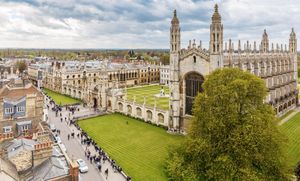The Asia-Pacific Economic Cooperation (APEC) summit wrapped up recently, held amid fluctuated global dynamics and marked by differing international stances. The gathering took place over two days in Lima, Peru, drawing together the leaders of 21 Pacific Rim economies. This regional forum highlighted the growing prominence of Chinese President Xi Jinping and underscored the anxieties surrounding the potential shifts under the incoming U.S. administration led by Donald Trump.
Attendees included influential figures such as U.S. President Joe Biden and China's Xi, each of whom, bringing distinct agendas to the table, engaged with discussions primarily framed around economic cooperation and trade. The summit saw some light-hearted moments, yet these were often overshadowed by the undercurrents of political tension and strategic maneuvering.
Traditionally, APEC summits focus on initiatives to strengthen economic cooperation, promote sustainability, and uphold the principles of free trade across member nations. This year, alongside the expectation of substantive agreements, there was palpable anticipation about how Trump's policies might reshape U.S. participation. Trump's prior campaign pledges indicated intentions to withdraw from international collaborations and lessen America's global trade leading role, casting uncertainty over future APEC summits.
Notably, Biden's delayed arrival at the family photo session on the summit's closing day served as a metaphor for his administration's current standing both domestically and internationally. Reports indicated Biden's late entrance led to some awkward exchanges, reflecting the broader narrative of the U.S.'s waning influence.
Xi's strategic positioning at the forefront of the event signified not only his pivotal role at the APEC forum but also China's aspirations to solidify its dominance as a leading voice on global trade issues. Xi's presence coupled with the announcement of China's $1.3 billion investment to develop the largest port facility in South America aimed to bolster Peru's economic outlook and strengthen China’s economic foothold within the region.
Perhaps one of the summit's glaring themes was the growing tension between the U.S. and China, particularly strategized around economic policies and trade agreements. Observers noted Xi leveraged this occasion to amplify calls for renewed global trade partnerships, which stand to be critically assessed by Trump's administration. The spotlight on trade deals was more than mere rhetoric; it embodied the core interests of nations investing heavily to secure advantageous conditions as they negotiate terms for future engagements.
Despite the omnipresent focus on geopolitics, lighter discussions also unfolded during the APEC summit. Leaders shared moments of camaraderie, posing for pictures and exchanging pleasantries. Nicaragua's President Daniel Ortega, for example, drew attention not only for political debates but also for his unmistakable humor, lightening the often tense atmosphere. His remarks on teamwork had several leaders chuckling, reinforcing the element of diplomacy even amid mounting contention.
The specter of Trump's administration loomed large, influencing discussions about economic strategies and the need for cooperation. Several attending leaders voiced their concerns over the ramifications of potential U.S. withdrawal from existing trade agreements. The uncertainty was palpable: would the United States steer toward isolationism, or seek collaborative pathways to address looming global economic challenges?
Environmentally, the APEC summit tackled substantial discussions surrounding climate change and sustainability, with leaders vowing collaborative efforts to combat global warming. These commitments stand at odds with some of Trump’s past proclamations questioning climate science. The divergence between the annexation of climate agendas at the summit and Trump's rhetoric may foreshadow what’s to come as nations recalibrate their strategies with the assumption of the new administration.
Trump's potential influence remains pivotal. His ‘America First’ policy has formed significant barriers to multilateral growth initiatives, which would likely realign member nations' approaches post-summit. Questions lingered: which direction these Pacific economies will pivot toward, particularly if trade negotiations diverge, raising the stakes of the regional economic order's future.
Closing out the summit amid these discussions, the leaders expressed hopes for coherent cooperation, framing it as the best route forward. Yet the practicality of such cooperation is rife with challenges as the United States grapples with its identity within the global community under Trump's impending rhetoric.
Looking forward, APEC's future lies not only on the founders' principles but also under new leadership dynamics, particularly surrounding Trump and Xi. Their contrasting perspectives on trade present not just competing ideologies but possible forks in the road for nations involved. History has shown the predictability of turbulence at transitions of administration; the next few years might reveal whether APEC can hold steady or face substantive transformative shifts.
With Trump's backdrop of economic policies yet unresolved and Xi's burgeoning role as global leader increasingly affirmed, the question arises: can APEC truly thrive amid such seismic changes? Will it remain relevant as members navigate through varied national interests and power dynamics? The answers may well lie not just within the attractions of collaborative harmony but also individual nations’ alignments as they chart their courses on the ever-evolving geopolitical map.



